Paris noir
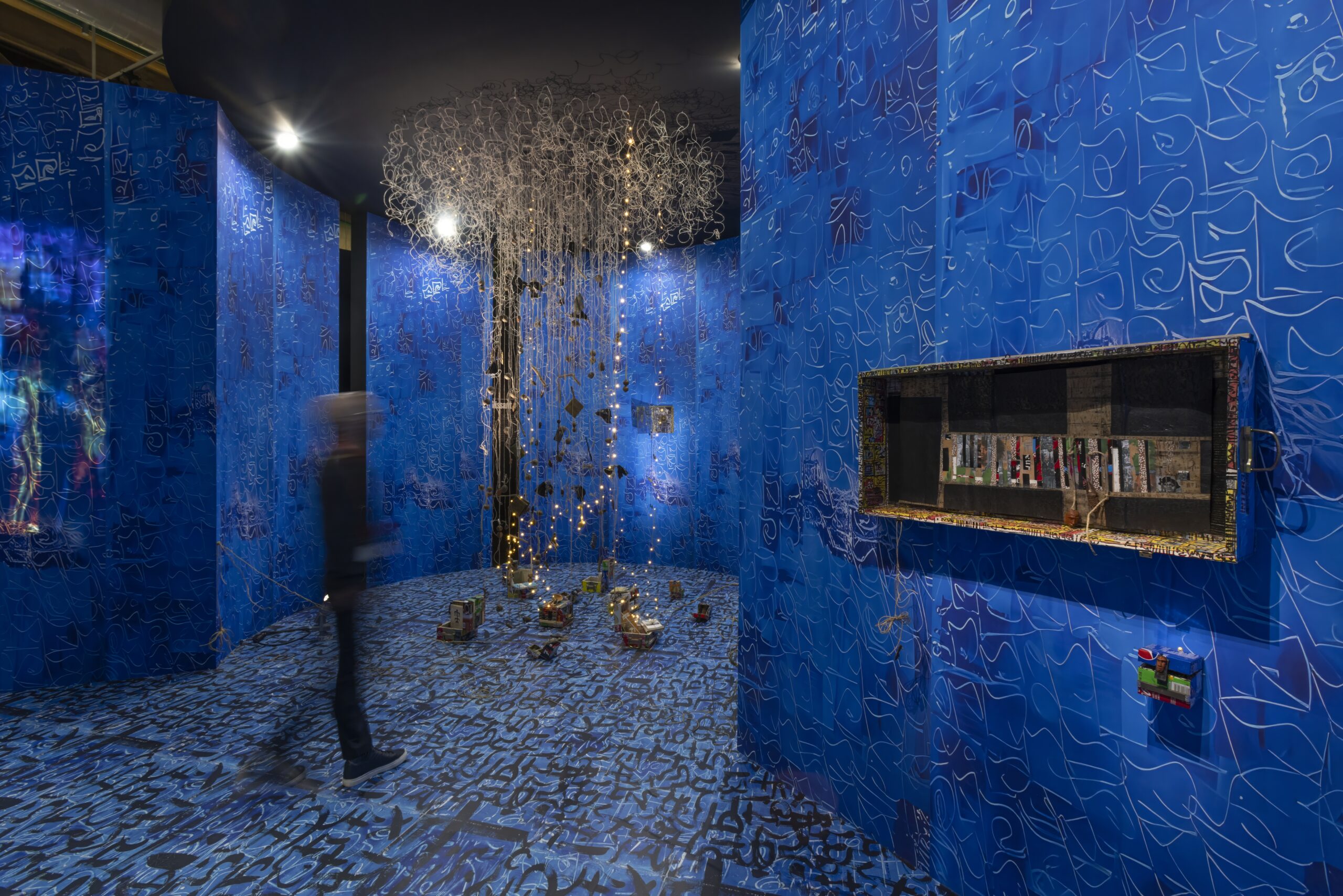
Art Histories in Vibration
The exhibition Paris Noir (Black Paris) highlights 50 years of Pan-African creation curated by Alicia Knock; it brings to light a history that has remained in the shadows over the course of a long process of decolonialization. The antithesis of a retrospective exhibition, Paris noir is a guide to modern and postmodern art history. Similar in pedigree to the reputed exhibitions Paris-Moscow, Paris-New York and Paris-Paris, critical stakes are high as the show must compensate for lacunae in a fundamental history whose protagonists are often relegated to the ranks of minor players whose contributions tend to be deemed peripheral. The exhibition expresses a curatorial intent that challenges a national narrative that remains profoundly unequal in nature by confronting it with an art history that has been defined by emancipatory struggle, diasporic circulation and forms of resistance. By providing a platform for African artists as well as for those from the African diaspora who have lived, studied or shown work in France, the Centre Pompidou gives visibility to modernity. The exhibition creates the conditions for another narrative to emerge; one that takes minority voices and those from lost lineages into account, in a reparative gesture that addresses institutional erasure.
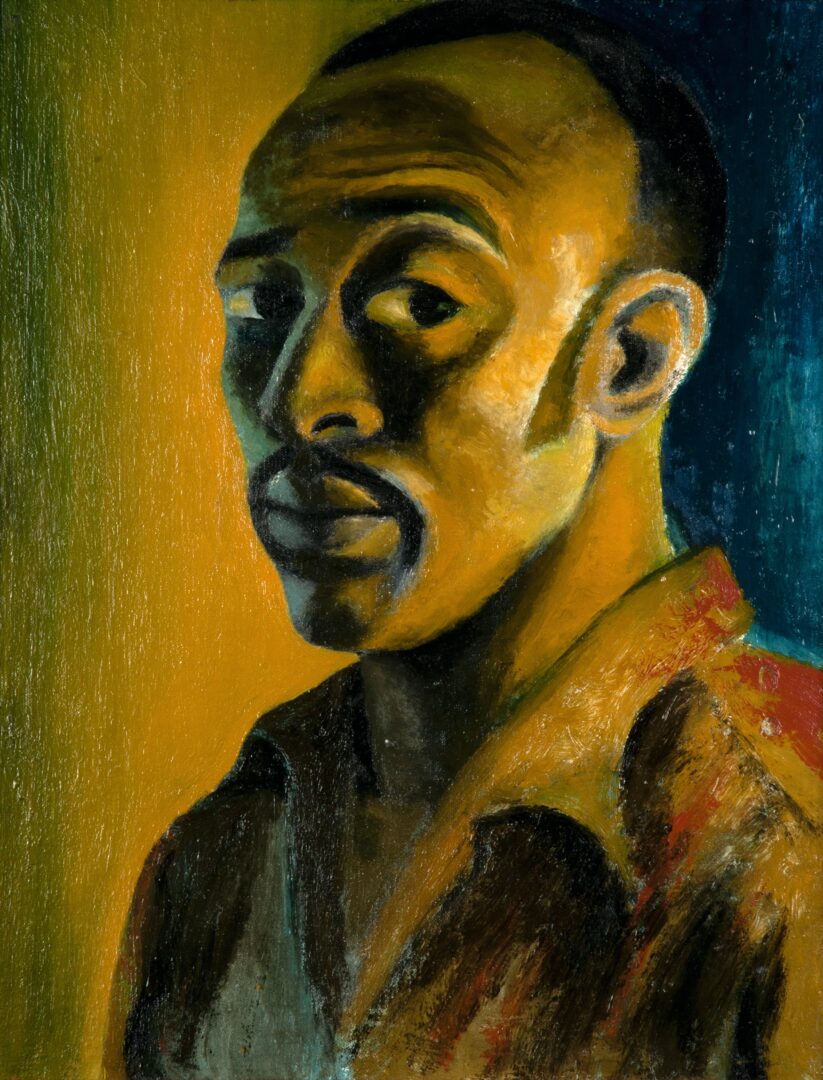
Huile sur carton / Oil on cardboard, 45,7 × 35,6 cm. The Kilbourn Collection. © Estate of Gerard Sekoto/Adagp, Paris, 2025. Photo : © Jacopo Salvi.
DISCURSIVE ORALITY
The exhibition’s point of departure is 1947—a year which marks the creation of the art review Présence Africaine (African Presence)—and ends in 1990 with the creation of Revue noire (Black Review). The timeline retraces key moments in the editorial process, sites of utterance, early texts and oral histories of lived diasporic experiences. The exhibition offers a reminder that art history is created through the process of writing, through statements, as well as through the expression of opinion. Key thinkers belonging to the Négritude movement such as Aimé and Suzanne Césaire, as well as Frantz Fanon, have been called upon in order to further the emancipatory process.
This colossal theoretical and aesthetic project gravitates around the central figure of Édouard Glissant. The Martinique-born poet’s “One-World” theory forms the basis of a foundational presence which sets the tone of the exhibition, creating a vibrational space, a rhizome of thought and of form, of archives and gestures, of practices and discourses. Interactions and mutual opacity between artists and intellectuals of an ideal Paris, a Paris of relationships—also the setting for the mentorship between the writer James Baldwin and the painter Beauford Delaney. The duo, both of whom were exiled to the margins of a welcoming or indifferent capitol, is an example of the sort of elective affinities that are given visibility.
CREATING COLLECTIVITY, MAKING HISTORY
Paris noir hybridises artists, intellectuals, contexts, continents and forms of expression. Within this open constellation, aesthetic, political and geographical connections emerge. For example, in Georges Coran’s impressive wall hanging, Délire et Paix (Delirium and Peace)— whose title was taken from a poem by Aimé Césaire—the formal vocabulary depicts nature in the Caribbean using a fauvist colour palette, demonstrating the porosity of avant-garde processes. Rather than confirming an already-existing canon, the exhibition expands it through a radical process of bringing recorded history up-to-date. It also rectifies its lapses, “transmitting the knowledge of transmitters” (A. Knock). In order to weave a narrative of this level of complexity, more than 150 artists have been included, most of whom have never before been shown in France. Works by Gerard Sekoto, Wilfredo Lam, Faith Ringgold, Ernst Mancoba, Uche Okeke and Ted Joans are among those included in the exhibition. Here, a body of critical and archival materials in the form of notebooks, documents, manifestos, photographs and sketchbooks combine with painting, sculpture, textiles, performance and abstraction in order to demonstrate a diversity of forms. A decentralised and vibratory modernity begins to take shape, one that initiates correspondences, artistic and theoretical dialogue, staging encounters between different movements and contexts. A polyphonic, polycentric and pronounced history.
The scattered nature of this corpus is rendered decipherable due to the careful curation of Paris noir; its protean constellation is presented alongside a host of community-based resonances, all held together by the common need to preserve a shared history. The combination of the works of painter and collagist Luce Turnier with those of artist and writer Max Pinchinat produces a dialogue which sketches out the contours of a Haitian art history. Alongside aesthetic additions to a dominant narrative, there is the construction of a plural and demanding form of history, as well. The works of two members of the Fwomajé group—Bertin Nivor and Ernest Breleur demonstrate a collective intent to create Caribbean forms of expression while keeping a form of individual identity intact. The exhibition manages to highlight the singularity of collective affiliations without resorting to cliché.
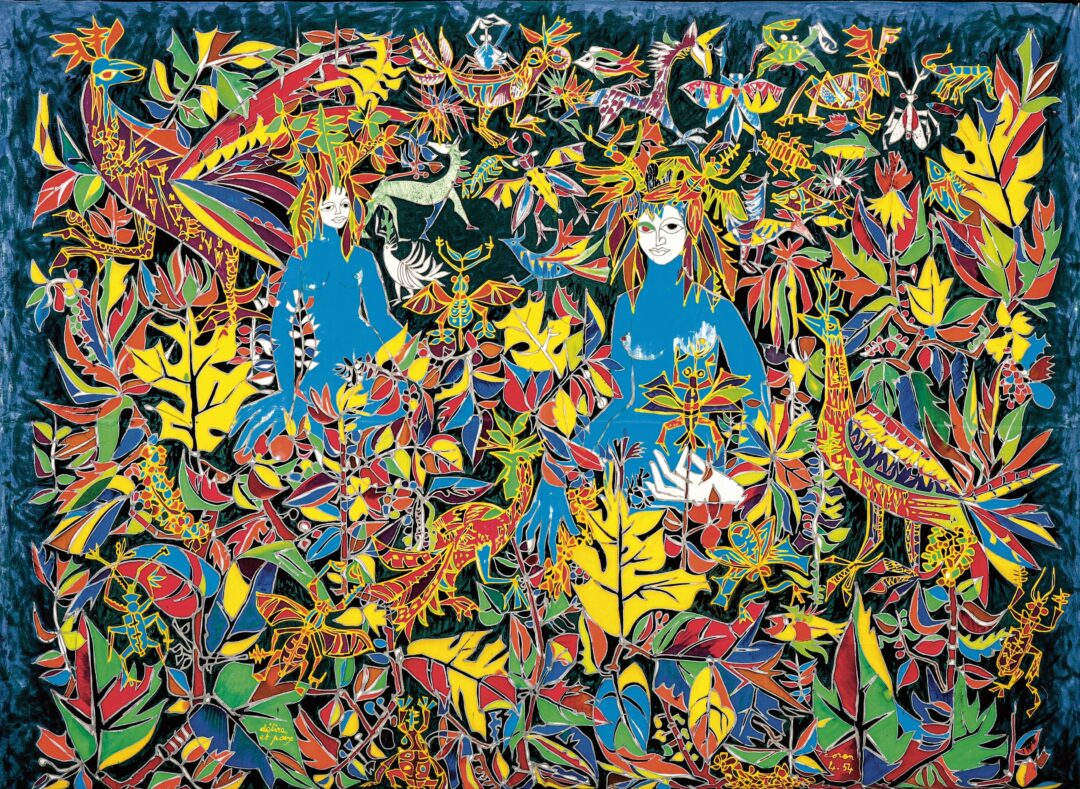
Encre sur toile de coton / Ink on cotton canvas, 227 × 295 cm. Centre Pompidou, Musée national d’art moderne, Paris. Achat, 2025. © Georges Coran. Photo : © Claude Coran.
SPACE FOR RECOGNITION
Paris noir creates space for stories that recount the construction of artistic identities, some of which have developed silently and are often hidden from view. The exhibition layout reflects this intention, subtly bringing forth singularities among the plurality of forms and of individual voices. Each exhibition space unveils a decade, a territory, a selection of practices, revealing the breadth and complexity of a Pan-African history which never waited around to be recorded in order to exist. Installations made specifically for the exhibition are presented as well; among them are a sanctuary for composite memory made by the Valérie John atelier-workshop, as well as the series Origines presented as a monumental vitrine in the form of a leporello—an accordion-shaped book—and the fresco made by the graffiti artist Shuck One. Paris noir is a space of potentiality, one where new thought trajectories can take place, as well as interpretations for the senses. The exhibition is one of voices, of vibrations. A story unfolds in which modernity and African-ness meet, where each exhibition space asks the same question: what are the reasons for an exclusion of this scale? Here, the answer takes the form of practices and presence, along with a reconfiguration of the museographic narrative.
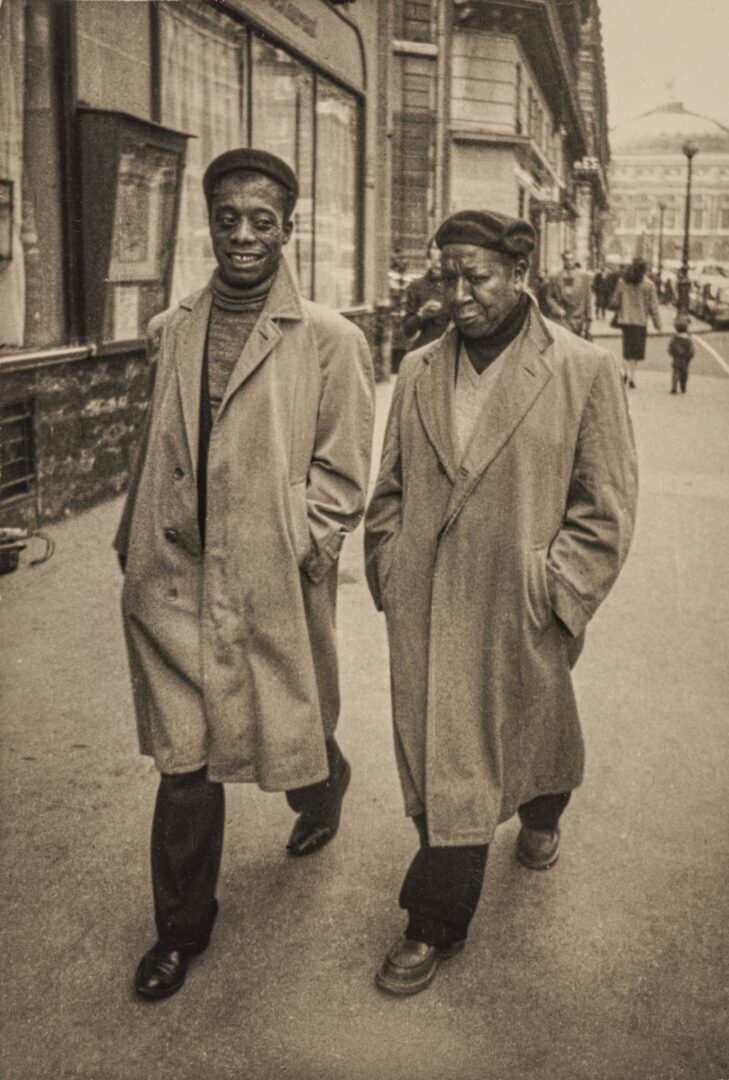
A NEW CARTOGRAPHY
Paris noir is a canonical intervention which identifies the historical omissions of Black artists, while neither engaging with nor excluding a more conflictual through line. Contrastingly, solo exhibitions by Raymond Saunders at David Zwirner and Euridice Zaituna Kala at La Criée provide a political intimacy, through the texture of migration, the other through the fragile medium of ecological and cultural memory.
Raymond Saunders’ solo exhibition embodies a Black modernity that has been shaped by fractures and symbols. His work focuses on the personal side of migration, of exile, of a fractured identity. Collages, collections, intense colours, the selection of the pieces on display concentrate on two ensembles—one featuring flowers and another doors. A poetics of disorder which provides a narrative about Black America from Paris which demonstrates that the edges are also themselves centres.
At La Criée, the personal-yet-political is further pursued by Euridice Zaituna Kala’s striking exhibition. Here, there is the appearance and disappearance of bodies, voices, memories. Zaituna Kala does not attempt to set the record straight; but rather to highlight the opacities of History. The artist’s work pursues a living archeology of archives, somewhere between invisibility and activation. Through installations and performances, she reveals the tension arising from erasure and underscores the lacunas of history. The artist further explores the terrain Paris noir began mapping: that of giving visibility to the scatteredness of the creation of a memory of dispersion; one which forges its own methods.
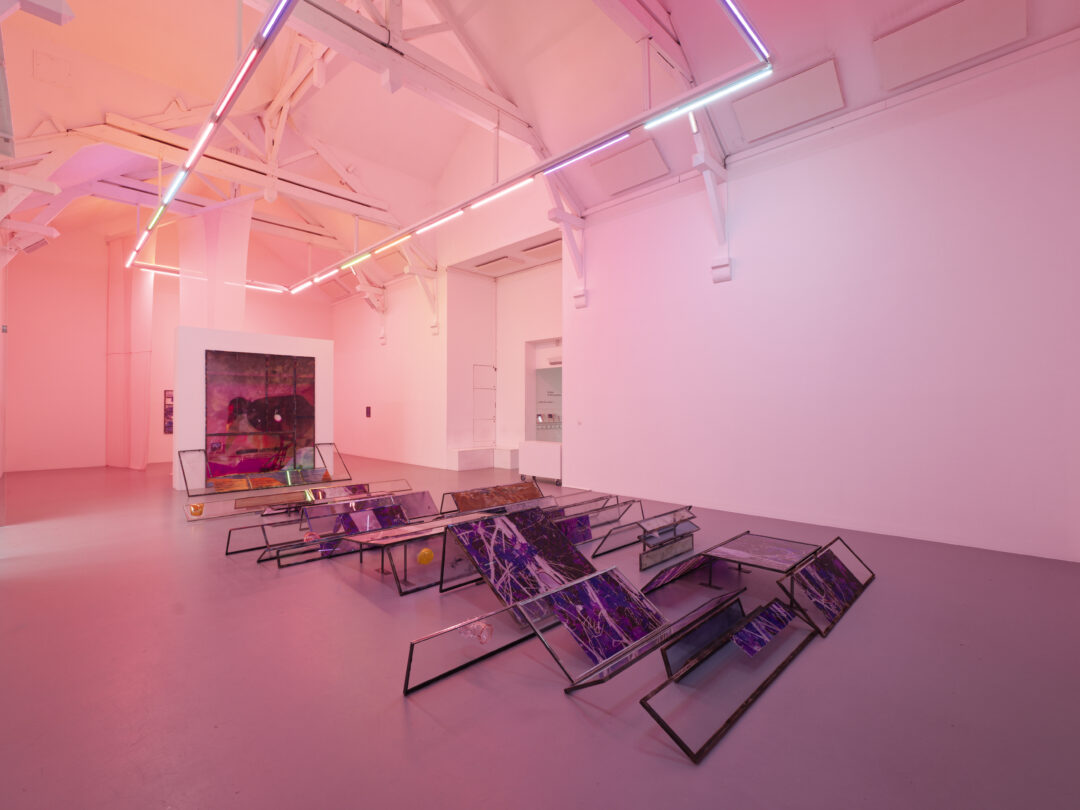
A STORY TO BE CONTINUED
These satellite exhibitions are not peripheral events; they extend and provide continuity for a larger project. Paris noir establishes a dialogue, Raymond Saunders and Euridice Zaituna Kala dig deep into the interstices, forming another geography of modern art where those who have been made invisible can finally speak from within the centre. These three exhibitions together constitute a plural cartography of the senses and of memory. They relocate the critical gaze and suggest new ways of thinking about art history. A lesson for contemporary criticism.
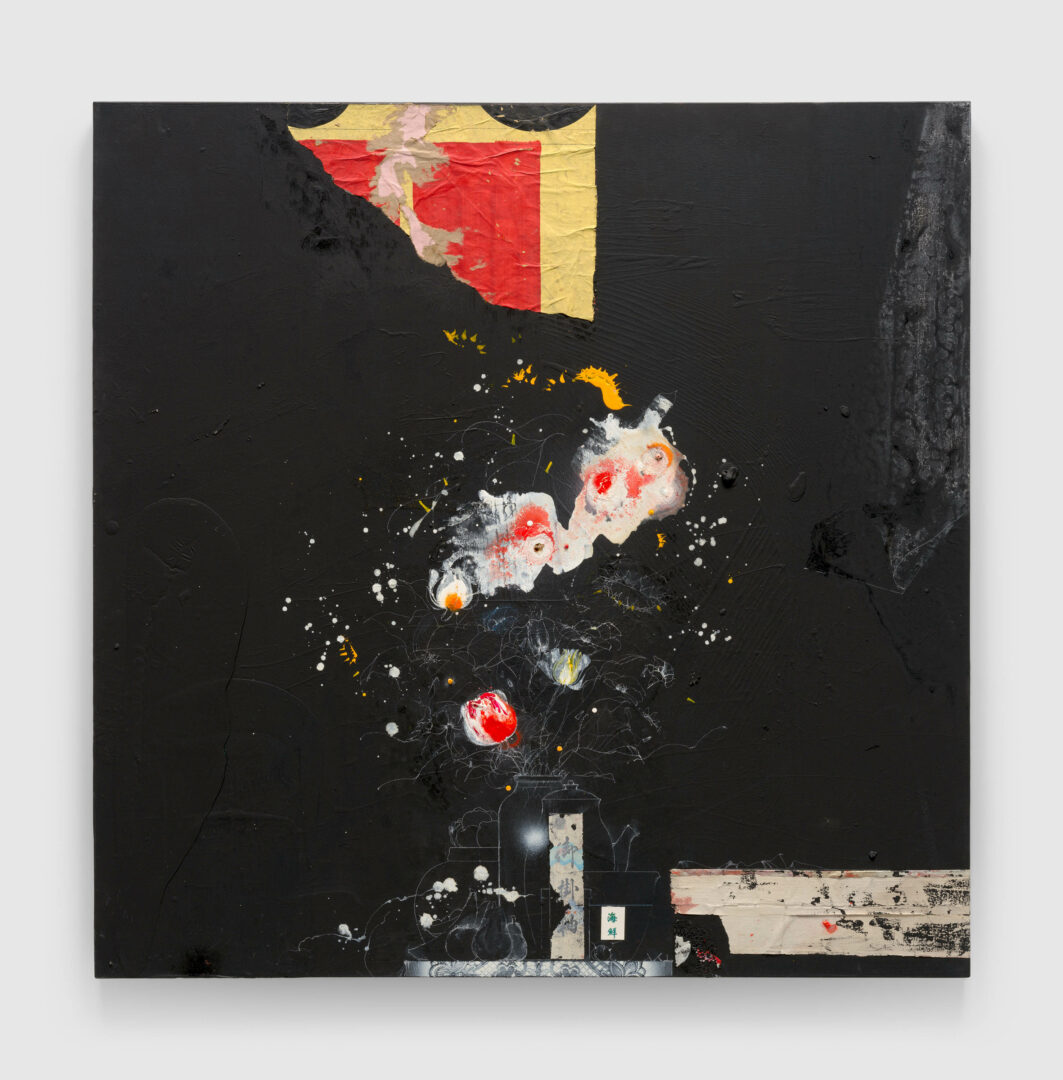
© Estate of Raymond Saunders. Courtesy of the Estate of Raymond Saunders and David Zwirner.
Head image : Vue de l’exposition / Exhibition view « Paris noir » au Centre Pompidou, 19.03 – 30.06.2025, Galerie 1, niveau 6. © Hervé Véronèse.
Related articles
The World Through AI
by Warren Neidich
Some white on the map
by Guillaume Gesvret
Toucher l’insensé
by Juliette Belleret